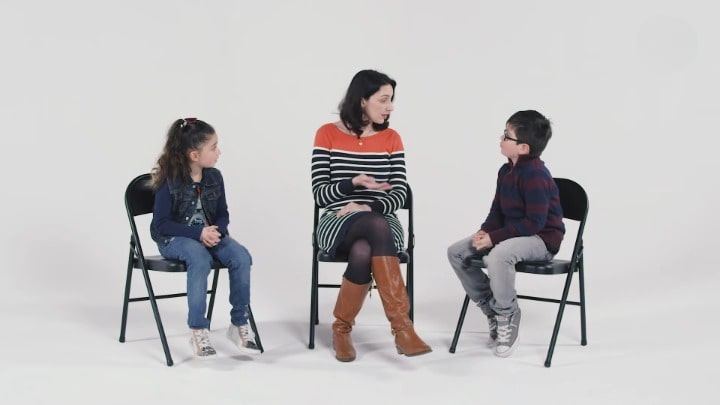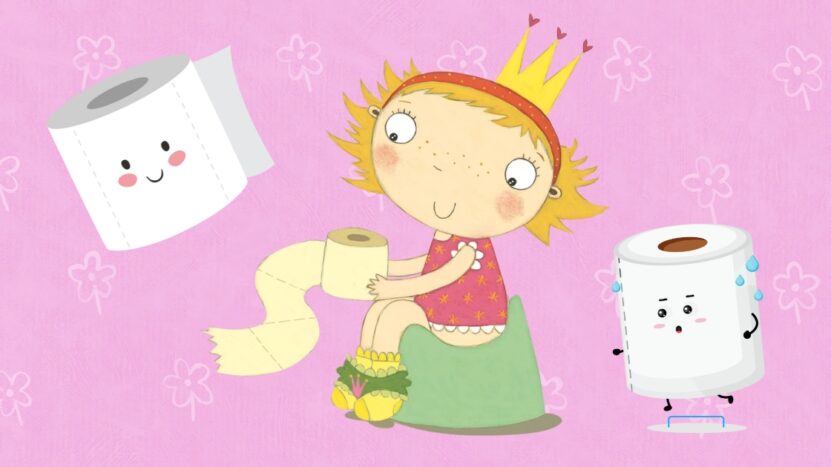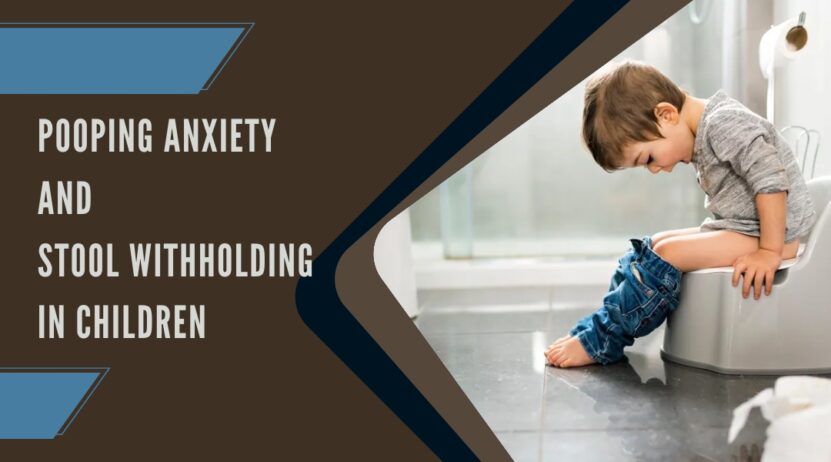Today, we’re going to explore a topic that might not be a common conversation piece at your dinner table, but it is nevertheless essential, especially for parents. We’re discussing the somewhat awkward but very real issue of ‘pooping anxiety’ and ‘stool withholding’ in children. These behaviors can cause significant discomfort and stress for the child and the parents. Understanding them is the first step to helping your child overcome them.
This article aims to make the discussion about pooping anxiety and stool withholding less taboo and more accessible for everyone. It is important because, while these issues are common, they are often misunderstood, sometimes ignored, and frequently dealt with improperly. By increasing awareness and providing practical strategies, we aim to empower parents and caregivers to address this delicate topic with their children.
Causes and Symptoms
Let’s start at the beginning: what exactly are we talking about when we say ‘pooping anxiety’ and ‘stool withholding?’ Well, ‘pooping anxiety’ refers to a child’s fear or anxiety about the act of defecation. This anxiety might stem from a variety of causes, such as a previous painful bowel movement, fear of toilets, or general resistance to body functions they can’t control. ‘Stool withholding,’ on the other hand, is the deliberate prevention of bowel movements, often due to fear or discomfort.
The symptoms of these conditions may vary widely, but common ones include less frequent bowel movements, hard or large stools, soiling or leaking, abdominal pain, and changes in eating habits. Psychological signs may include anxiety or fear around bathroom use, stubbornness or defiance about going to the bathroom, and avoidance behaviors.
It’s important to note that while some symptoms are physical and relatively easy to identify, others are psychological and may require more in-depth understanding and observation. Every child is unique, and their experiences and expressions of discomfort can be very different. It’s crucial, therefore, to be patient, empathetic, and attentive to both the physical and emotional signals your child might be sending.
The Importance of Addressing the Problem
Why should we pay attention to these issues? Some might argue that these are just phases children go through, and they’ll outgrow them eventually. While it’s true that children can outgrow these behaviors, that doesn’t mean they should be ignored. The issue here is not just about the physical discomfort caused by constipation or the potential health risks of holding in stool for long periods.
A child’s early experiences with toilet use can have a significant impact on their self-esteem and body image. Negative experiences, such as pain or anxiety around bowel movements, can cause children to develop unhealthy attitudes toward their bodies. They might see their body functions as something shameful, scary, or disgusting, which can harm their self-esteem and body image.
Furthermore, untreated pooping anxiety and stool withholding can lead to chronic constipation, a more serious health issue that can cause discomfort, pain, and other problems down the line. But beyond the physical implications, ongoing distress around defecation can contribute to broader anxiety issues, inhibit social skills development, and impact the child’s quality of life.
How Pooping Anxiety Can Impact a Child’s Physical Health
Let’s delve a little deeper into the physical effects of pooping anxiety and stool withholding. When a child holds in their stool for long periods, it can lead to chronic constipation. The large intestine absorbs more water the longer stool remains there, making it harder and more difficult to pass. This can result in painful bowel movements, further reinforcing the child’s fear and anxiety.
Moreover, prolonged stool withholding can stretch the colon, leading to a condition called megacolon, which can further complicate bowel movements. Over time, some children may also develop encopresis, a condition where they leak stool into their underwear. This is not a sign of laziness or a lack of toilet training but rather a consequence of long-term stool withholding.
Pooping anxiety and stool withholding can also affect a child’s appetite and eating habits. They might eat less to avoid feeling the need to poop, which can impact their growth and development. Furthermore, the physical discomfort can also distract them from their daily activities and reduce their overall quality of life.
Recognizing the Emotional Toll of Stool Withholding
But it’s not just the physical toll we need to worry about. There is also an emotional toll that comes with pooping anxiety and stool withholding. Children might feel embarrassed or ashamed of their bathroom-related anxieties or their inability to control their bowel movements. This can lead to feelings of isolation, as they may not understand why this is happening to them or be able to communicate their feelings effectively.
Children with these issues might also feel stressed or anxious around routine activities that involve bathrooms, like going to school or visiting friends. This can limit their social activities and impact their development of social skills. Moreover, ongoing anxiety can interfere with their sleep, concentration, and overall mental well-being.
Remember, children may not always be able to articulate their emotions or fears clearly. So, as adults, it’s important to be attentive to changes in their behavior, mood, or routines that might indicate they’re struggling with these issues. And most importantly, it’s crucial to approach the topic with sensitivity and understanding, reassuring them that they’re not alone and that help is available.
Common Triggers and How to Manage Them
To manage pooping anxiety and stool withholding, it’s crucial to understand what triggers these behaviors. Triggers can vary from child to child, but common ones include a previous painful bowel movement, fear of public bathrooms, a significant change or disruption in routine (like starting school), or a negative bathroom incident (like a fall).
One effective strategy to manage these triggers is gradual exposure. If your child fears public bathrooms, start by visiting quieter, less crowded bathrooms and slowly work your way up. If a painful bowel movement is an issue, ensuring a balanced diet rich in fiber and hydration can help make bowel movements easier and less painful.
Creating a consistent toilet routine can also be helpful, especially for children who resist going to the bathroom due to disruptions in their routines. Having a set ‘bathroom time’ each day can help make bowel movements a normal, predictable part of their day, reducing anxiety and resistance.
Strategies for Supporting Children With This Issue

Supporting children with pooping anxiety and stool withholding is not just about managing triggers; it also involves helping them build healthy attitudes toward their bodies and their bowel movements. This starts with education – teaching children about how their bodies work can help demystify the process and make it less scary.
Using age-appropriate books, videos, or games can make this learning process fun and engaging. It can also be helpful to normalize the topic, reminding them that everyone poops and it’s a natural part of life. This can help reduce feelings of shame or embarrassment they might be experiencing.
Positive reinforcement is another powerful tool. Celebrate their successes, no matter how small, and reassure them when they’re struggling. Remember, progress might be slow, and there may be setbacks, but patience, positivity, and persistence can go a long way in helping them overcome their anxieties.
The Role of Parental Support in Overcoming the Anxiety
Parental support plays a crucial role in helping children overcome pooping anxiety and stool withholding. Your approach, attitudes, and actions can significantly impact your child’s ability to cope with these issues.
Firstly, make sure to approach the issue with patience and understanding. Avoid blaming or punishing your child for these behaviors, as this can increase their anxiety and make the problem worse. Remember, your child is not doing this on purpose; they’re reacting to fear or discomfort.
Communication is also key. Encourage your child to express their feelings and fears, and listen attentively when they do. Validate their experiences, reassure them that it’s okay to feel scared, and remind them that you’re there to help. Discussing the problem openly can help reduce the stigma and fear associated with it.
Lastly, model healthy attitudes and behaviors yourself. Show them that you’re not embarrassed or disgusted by bodily functions, and maintain a positive, relaxed attitude during bathroom times. This can help create a safe and supportive environment for them to overcome their anxieties.
Creating a Positive Toilet Environment

Creating a positive, relaxed toilet environment can significantly help in managing pooping anxiety and stool withholding. Make the bathroom a comfortable, non-threatening space. This could mean decorating it with your child’s favorite colors or characters, keeping it clean and well-lit, or having a step stool for easy toilet access.
Consider introducing fun elements like bathroom-friendly books or toys that your child can use while on the toilet. This can help them associate toilet time with positive experiences rather than fear or discomfort. Music or calming sounds can also help create a relaxing atmosphere.
Lastly, respect your child’s need for privacy during bathroom time. Just like adults, children can feel embarrassed or uncomfortable if they feel watched or pressured during bowel movements. Allow them some alone time in the bathroom while still ensuring they’re safe.
The Power of Communication
Communication is a powerful tool in managing and overcoming pooping anxiety and stool withholding. Regular, open discussions about these issues can help normalize them, reduce shame and fear, and make your child feel supported.
Start by discussing what’s happening in a simple, age-appropriate way. Explain why holding in stool is not healthy, and reassure them that pooping is a natural, normal process that everyone goes through. Encourage them to ask questions, express their fears, and share their feelings.
It’s important to listen attentively and empathetically when your child opens up about their anxieties. Validate their feelings, even if you don’t fully understand them. Reassure them that it’s okay to feel scared or worried, and remind them that you’re there to help them through it. The goal is not to dismiss or downplay their fears, but to provide a safe, supportive space for them to express and overcome them.
When to Seek Medical or Psychological Assistance
While many children can overcome pooping anxiety and stool withholding with time, patience, and the strategies we’ve discussed, there are situations where professional help may be needed. If your child’s symptoms are severe, persist for several weeks, or are causing significant distress or physical discomfort, it might be time to seek medical advice.
A pediatrician can help rule out any physical causes for the symptoms, like digestive disorders, and provide treatment options for chronic constipation if needed. In some cases, a referral to a pediatric gastroenterologist may be necessary for more specialized care.
Psychological assistance might also be beneficial, especially if the anxiety is severe or impacting other areas of the child’s life. A child psychologist or therapist can provide effective strategies and therapies to help manage anxiety, improve coping skills, and build self-esteem. Remember, seeking professional help is not a sign of failure or a reason to feel guilty; it’s about providing the best care for your child.
Managing and Preventing Pooping Anxiety in Children
To conclude, managing and preventing pooping anxiety and stool withholding in children is about more than just solving a physical problem. It’s about supporting your child’s emotional well-being, building healthy attitudes toward their bodies, and creating a safe, supportive environment for them to express and overcome their fears.
This involves a combination of practical strategies like maintaining a balanced diet and regular toilet routine, creating a positive bathroom environment, and using positive reinforcement. It also involves emotional support, like open communication, validation of feelings, and providing reassurance.
Preventing these issues involves similar strategies. Teaching your child about their bodies and normalizing bowel movements from a young age can help reduce fear and embarrassment. And of course, maintaining a positive, relaxed attitude towards bathroom times can help set the tone for your child’s attitudes and experiences.
Final Words
In wrapping up this discussion on a sensitive yet crucial aspect of children’s health, it’s essential to remember that patience, understanding, and empathy go a long way. No two children are the same, and what works for one might not work for another. Approach the situation with an open mind and heart, and know that it’s okay to seek help when needed.
Always remind your child that they’re not alone, that it’s okay to feel scared, and that they’re not to blame for their fears or behaviors. Above all, reassure them of your unconditional love and support. With time, patience, and the right strategies, pooping anxiety and stool withholding can be overcome, leading to a happier, healthier child.

